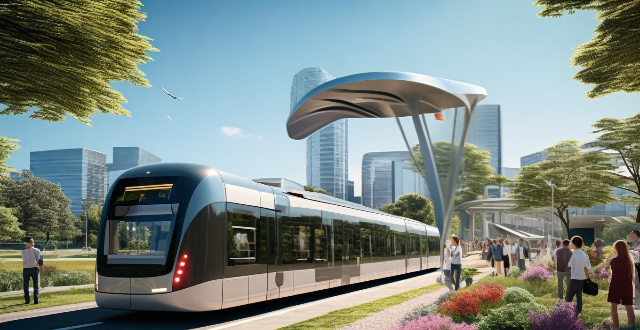Integrated transportation systems in cities offer benefits such as improved efficiency, environmental sustainability, economic development, social inclusivity, long-term sustainability, promotion of healthy lifestyles, and enhanced urban planning. These systems combine various modes of transport like buses, trains, subways, bike-sharing programs, walking, and carpooling to provide seamless, efficient, and sustainable mobility options for residents and visitors. By implementing an integrated system, cities can reduce travel time, increase accessibility, simplify payment methods, reduce emissions, promote green mobility, conserve energy, attract businesses, boost tourism, create jobs, provide equitable access, enhance safety, foster community cohesion, future-proof infrastructure, reduce maintenance costs, adapt to change, encourage active commuting, reduce sedentary behavior, encourage compact city design, and optimize land use. Overall, integrated transportation systems can significantly enhance the quality of life for city inhabitants and contribute to economic growth and environmental sustainability.

Benefits of Implementing an Integrated Transportation System in a City
Integrated transportation systems are designed to provide a seamless, efficient, and sustainable means of transportation for city residents and visitors. These systems typically include a combination of public transit options such as buses, trains, subways, and bike-sharing programs, along with other modes of transportation like walking and carpooling. By implementing an integrated transportation system, cities can enjoy numerous benefits that enhance the quality of life for their inhabitants and promote economic growth.
Improved Efficiency and Convenience
- Reduced Travel Time: An integrated system streamlines routes and schedules, reducing wait times and travel durations between different modes of transport.
- Increased Accessibility: Better connectivity between different forms of transit allows for easier access to various parts of the city, especially for those without private vehicles.
- Simplified Payment Systems: Unified fare collection and payment methods across all transit services make it more convenient for users to pay for their journeys.
Environmental Sustainability
- Reduced Emissions: Fewer cars on the road lead to lower greenhouse gas emissions and improved air quality.
- Promotion of Green Mobility: Encourages the use of eco-friendly transportation options like bicycles and electric vehicles.
- Conservation of Energy: Optimized routes and shared rides mean less fuel consumption overall.
Economic Development
- Attraction of Businesses: A well-connected city is attractive to companies looking to locate or expand operations.
- Tourism Boost: Easy navigation within the city can increase tourism, which boosts local economy through spending on attractions, restaurants, and accommodations.
- Job Creation: The development and maintenance of an integrated transportation system create jobs in various sectors.
Social Inclusivity
- Equitable Access: Provides transportation options for low-income individuals who may not have access to private vehicles.
- Enhanced Safety: Safer roads due to reduced congestion and improved pedestrian facilities.
- Community Cohesion: Facilitates interaction among diverse community members as they share transportation resources.
Long-Term Sustainability
- Future-Proofing Infrastructure: Planned development can anticipate future needs rather than reacting to crises.
- Reduction in Maintenance Costs: Well-coordinated systems can reduce duplication of efforts and costs in maintenance.
- Adaptability to Change: An integrated system can be more easily adapted to changing technologies and trends in urban mobility.
Promotion of Healthy Lifestyles
- Encouragement of Active Commuting: Walking or biking to transit points promotes physical activity.
- Reduction in Sedentary Behavior: Less time spent in cars leads to more active lifestyles.
Enhanced Urban Planning
- Compact City Design: Encourages denser, mixed-use development around transit hubs.
- Land Use Optimization: More efficient use of space as fewer areas are dedicated to parking lots and wide roads.
In conclusion, implementing an integrated transportation system offers multiple advantages that range from immediate improvements in convenience and efficiency to long-term benefits such as environmental sustainability and economic growth. Cities that invest in such systems position themselves for a future where mobility is not just a necessity but a cornerstone of livability and prosperity.